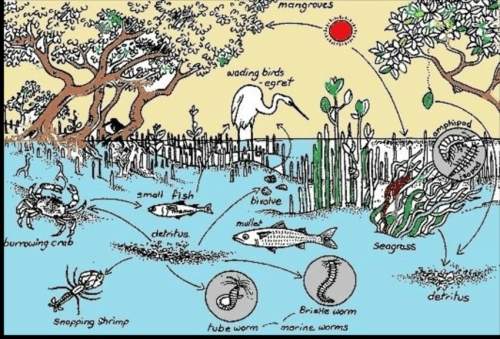
Biology, 30.01.2020 16:59 mamaditto9480
Why was the reduction of the bison population to under 1,000 individuals a bottleneck event for the species? a. it drastically reduced the gene pool of the species. b. it reduced the territorial range available to the species. c. foreign genes were introduced by crossbreeding with cattle. d. it reduced the prevalence of recessive traits

Answers: 2


Another question on Biology

Biology, 21.06.2019 21:00
1. environmental factors, such as ph and temperature, can affect the function of an enzyme. a. true b. false 2. which of the following is an organic molecules (ex. vitamins) that an enzyme? a. coenzyme b. product c. active site d. substrate 3. how do enzymes effect the speed of a chemical reaction? a. they speed it up b. they slow it down c. they have no effect on the speed of a reaction 4. during a chemical reaction, an enzyme is used up so that it can only be used one time. a. true b. false 5. which of the following results from a chemical reaction that is catalyzed by an enzymes? a. active site b. product c. substrate d. coenzyme
Answers: 3


Biology, 22.06.2019 00:30
On a recent expedition to a remote region of northern canada, scientists uncovered skeletal remains from about 100,000 years ago. surprisingly, all the skeletal remains, which included many species from differing biological families and spanned about two thousand years, showed evidence of experiencing temperatures in excess of 1000 degrees fahrenheit (or 538 degrees celsius). which of the following, if true, best explains the apparent paradox between the cold environment and the evidence of the bones experiencing hot temperatures? (a) chemical changes that naturally occur during the process of decay in only one north canadian species produce the same evidence of the species' skeletons being exposed to hot temperatures as the expedition scientists found. (b) a little over 103,000 years ago, a large fire is known to have occurred in northern canada. (c) strong evidence exists that as early as 70,000 years ago, homo sapiens around the world relied heavily on fire to cook animals. (d) in the same expedition and in roughly the same layer of excavation, scientists found rudimentary wood cutting and hunting tools used by early humans.
Answers: 3

Biology, 22.06.2019 03:40
Imagine you are introducing the lac operan and the trp operon to students who have never learned about it before. complete the table to compare the similarities and differences between the two operons
Answers: 3
You know the right answer?
Why was the reduction of the bison population to under 1,000 individuals a bottleneck event for the...
Questions


Chemistry, 28.01.2020 04:31

Advanced Placement (AP), 28.01.2020 04:31

Mathematics, 28.01.2020 04:31






Mathematics, 28.01.2020 04:31

Chemistry, 28.01.2020 04:31

Health, 28.01.2020 04:31

History, 28.01.2020 04:31



Mathematics, 28.01.2020 04:31

History, 28.01.2020 04:31

Mathematics, 28.01.2020 04:31


Mathematics, 28.01.2020 04:31




